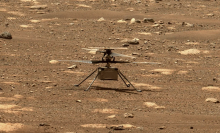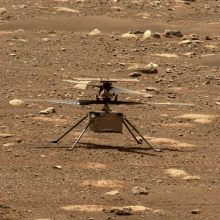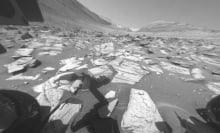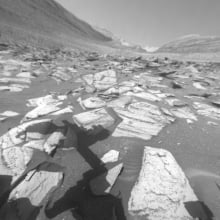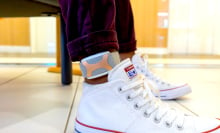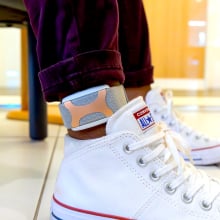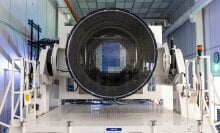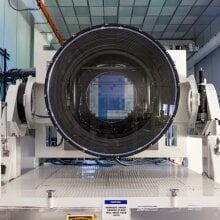Inside Building 31 at Johnson Space Center, NASA scientists have opened the metal canister holding rocks the agency plucked off a distant asteroid.
NASA has spent months trying to release two "stubborn" fasteners on the canister's lid, which was no easy feat. The asteroid receptacle, after parachuting down to Earth from outer space, has been (understandably) isolated inside a specially-designed glovebox, with limited tools and access.
Now, the lid is open, and the agency has snapped a picture of the bulk of what it captured from asteroid Bennu, a 1,600-foot-wide asteroid composed of boulders and rubble. It's the prize of the agency's first ever mission to bring pristine pieces of an asteroid back to our planet, an endeavor called OSIRIS-REx (short for Origins, Spectral Interpretation, Resource Identification, and Security – Regolith Explorer).
"It’s open! It’s open! And ready for its closeup," NASA wrote on X, formerly Twitter.
You can see dark rocks up to about 0.4 inches (1 centimeter) wide, and smaller particles of different sizes.

These samples are invaluable. Asteroid Bennu, like many asteroids, is a preserved time capsule from our ancient solar system. It's around 4.5 billion years old, so these pristine rocks can provide scientists insight into how objects like planets formed, and how Earth might have gotten its water.
To capture these samples, the OSIRIS-REx spacecraft approached asteroid Bennu in October 2020 and extended an arm containing the canister (called TAGSAM, or the Touch-and-Go Sample Acquisition Mechanism). The craft then pushed against Bennu for just five seconds, blowing nitrogen gas onto the asteroid, which propelled the rocks and dust into the canister.
Over three years later, chunks of Bennu are safely stored at NASA's Johnson Space Center.
For the next two years, NASA's science team will intensively study these samples. But it won't hoard them. The agency said that over 200 scientists globally will research Bennu's rocks and dust. What's more, some of the asteroid sample will be preserved for future scientists — with technology we don't have or haven't even envisioned — to analyze.
What secrets will Bennu reveal?
Topics NASA


